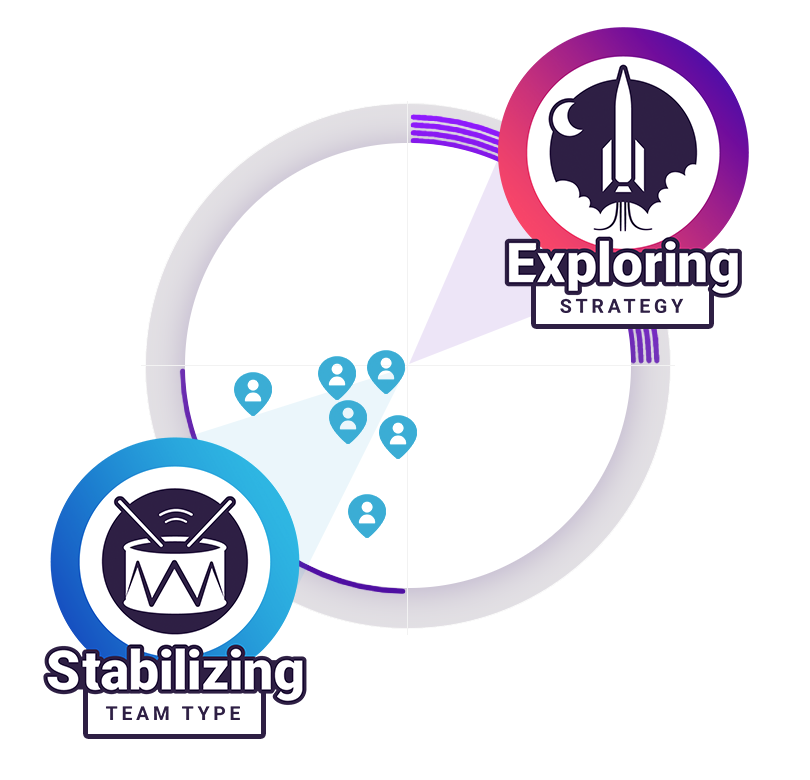What is a Stabilizing Team?
Introduction to Team Types
What is a Team Type?
What is an Exploring Team?
What is a Bolstering Team?
What is a Cultivating Team?
What is an Anchoring Team?
What is a Stabilizing Team?
What is an Executing Team?
What is a Producing Team?
What is a Pathfinding Team?
What is an Adapting Team?
Stabilizing Teams and Strategy
Knowing your Team Type is just one step in achieving business results. You also need to consider the strategy to achieve those results. Understanding your team in the context of the work to be done helps you identify risks and gaps when it comes to executing your team’s strategy. The Predictive Index also conducted extensive research to determine the 10 different Strategy Types that pair with those nine Team Types. Use the interactive below to learn about each of the 10 types.
How do Strategy Types impact Team Types?
You might have noticed that many of those Strategy Types look familiar to the Team Types we learned about earlier. That being said, you’re not always going to have a Strategy Type that directly matches your Team Type. In fact, it’s common to have a different Strategy Type, because priorities shift and new members might join the team at various times.
Don’t panic: A team and strategy mismatch won’t spell doom for your people. Instead of worrying about matching those types, you should instead focus on what strengths and gaps your team has to consider to reach its goals. This awareness sets the team up for success rather than leaving things up to chance. The Team Discovery tool even provides recommendations based on your Team Type and Strategy Type combination.
A Stabilizing Team with an Exploring Strategy

Let’s take a look at some example benefits and frictions of having a Stabilizing Team with an Exploring Strategy:
- Being so thorough can help define clear objectives for product innovation.
- Your team is more likely to test new ideas thoroughly than rushing to the next thing.
- Your team may not pursue ideas quick enough to keep up with market needs.
- Your team might over-engineer processes.
Knowing where you are and aren’t covered to tackle your strategy is pivotal to taking the right action for your team. In this example, one recommendation you might get from the tool is that this team should ship and share ideas early. Stabilizing Teams will prefer knowing as much as they possibly can before presenting information but with innovative goals this might not be the best option. To help with speed to market, team members should share ideas with others even if they’re not yet fully baked. That way you can test use cases, align on potential strategies—or even just get the word out in quick conversations.
Check out this story on how a PI clients was able to use their Team Types and Strategy Types successfully:
Every strategy is executed by a team, which is ultimately made up of individuals. This is why it’s important to be not only aware of yourself, but your team and your strategy as well.